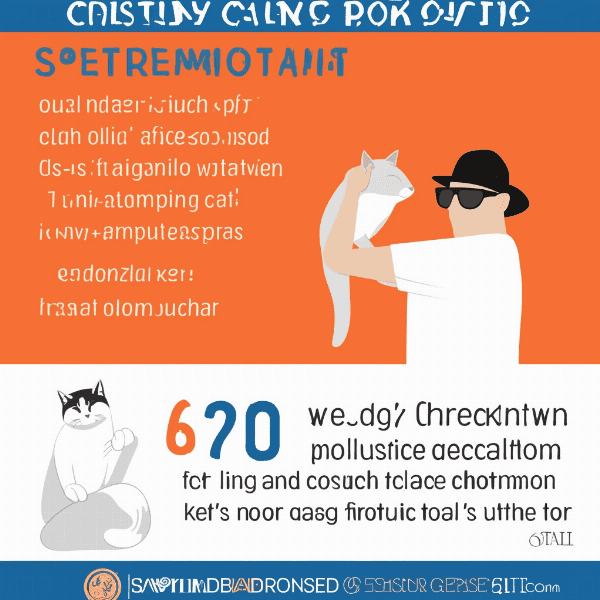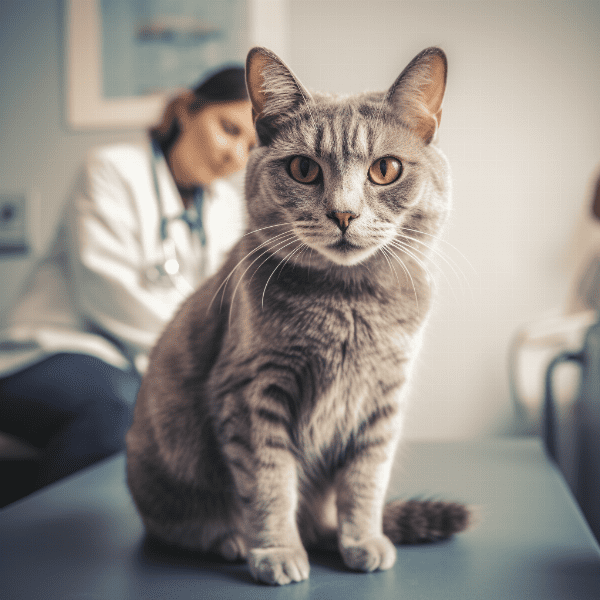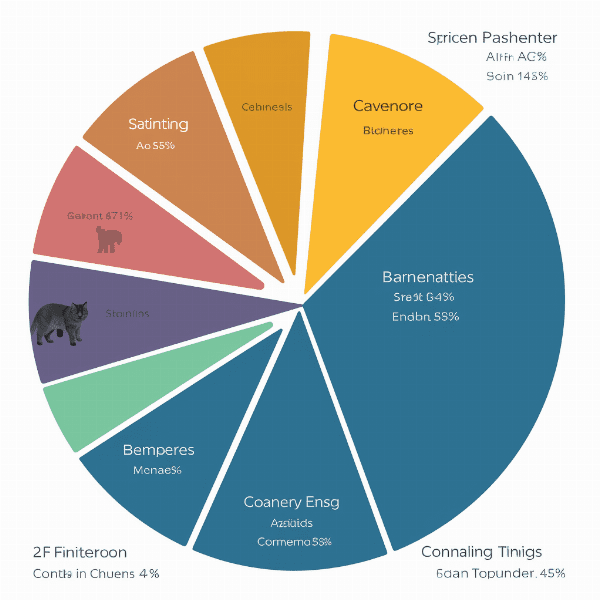Table of Contents
- Understanding Feline Skin Cancer
- Types of Feline Skin Cancer
- Common Symptoms of Feline Skin Cancer
- Diagnosing Feline Skin Cancer
- Treatment Options for Feline Skin Cancer
- Surgical Procedures for Feline Skin Cancer
- Radiation Therapy for Feline Skin Cancer
- Chemotherapy for Feline Skin Cancer
- Palliative Care for Feline Skin Cancer
- Preventing Feline Skin Cancer
Understanding Feline Skin Cancer
Feline skin cancer is a type of cancer that affects a cat’s skin. It can occur anywhere on a cat’s body and is caused by an abnormal growth of cells. Skin cancer in cats can be benign or malignant, and can affect cats of any age or breed.
Causes of Feline Skin Cancer
The exact causes of feline skin cancer are not fully understood, but exposure to sunlight is thought to be a major risk factor. Cats that spend a lot of time outdoors are more likely to develop skin cancer than indoor cats. Other potential causes of feline skin cancer include genetics, exposure to toxins, and a weakened immune system.
Risk Factors for Feline Skin Cancer
There are several risk factors that can increase a cat’s likelihood of developing skin cancer. These include:
- Exposure to sunlight
- White or light-colored cats
- Cats with thin hair coats
- Cats with a history of sunburn
- Living in areas with high levels of ultraviolet radiation
Symptoms of Feline Skin Cancer
The symptoms of feline skin cancer can vary depending on the type of cancer and its location on the body. However, some common symptoms include:
- Sores that do not heal
- Lumps or bumps on the skin
- Scaly or crusty skin
- Discolored patches of skin
- Excessive grooming or licking of a certain area
- Bleeding or oozing from a sore or lump
If you notice any of these symptoms in your cat, it is important to schedule an appointment with your veterinarian.
Diagnosis of Feline Skin Cancer
If your veterinarian suspects that your cat may have skin cancer, they will perform a thorough physical examination and may recommend a biopsy to confirm the diagnosis. A biopsy involves removing a small piece of tissue from the affected area and examining it under a microscope to determine if cancer cells are present.
Conclusion
Understanding the causes, risk factors, and symptoms of feline skin cancer is important for all cat owners. By recognizing the signs of skin cancer early and seeking prompt veterinary care, you can help ensure the best possible outcome for your feline companion.

Types of Feline Skin Cancer
There are several different types of skin cancer that can affect cats. Each type of skin cancer has its own unique characteristics and treatment options.
Squamous Cell Carcinoma
Squamous cell carcinoma is the most common type of skin cancer in cats. It typically affects the ears, nose, and eyelids, and is caused by sun exposure. Symptoms of squamous cell carcinoma include sores that do not heal, scaly skin, and bleeding or oozing from a sore.
Basal Cell Tumor
Basal cell tumors are less common in cats than in humans, but they can still occur. These tumors develop in the hair follicles and typically appear as small, raised bumps on the skin. Basal cell tumors are usually benign, but they can become malignant in rare cases.
Melanoma
Melanoma is a type of skin cancer that affects the pigment-producing cells in the skin. It can occur anywhere on the body and can be benign or malignant. Symptoms of melanoma include lumps or bumps on the skin that are black or brown in color.
Mast Cell Tumor
Mast cell tumors can occur anywhere on the body and can be benign or malignant. These tumors develop in the mast cells, which are cells that play a role in the body’s immune system. Symptoms of mast cell tumors include lumps or bumps on the skin, redness or inflammation, and itching or scratching.
Fibrosarcoma
Fibrosarcoma is a type of cancer that affects the connective tissue in the skin. It typically appears as a firm, raised lump on the skin and can be difficult to remove completely. Fibrosarcoma is more common in cats that have been vaccinated, although the reason for this is not fully understood.
Conclusion
Each type of feline skin cancer has its own unique characteristics and treatment options. If you notice any suspicious lumps or bumps on your cat’s skin, it is important to schedule an appointment with your veterinarian to determine the best course of action. Early detection and treatment can help improve your cat’s prognosis and quality of life.

Common Symptoms of Feline Skin Cancer
Skin cancer in cats can present with a variety of symptoms, some of which may be more obvious than others. It’s important to be familiar with the signs of feline skin cancer so that you can detect it early and seek veterinary care.
Visible Changes to the Skin
One of the most common symptoms of feline skin cancer is a visible change to the skin. This may include a lump or bump on the skin that wasn’t there before, a sore that doesn’t heal, or scaly or crusty patches of skin. You may also notice a change in the color or texture of your cat’s skin.
Behavioral Changes
Cats with skin cancer may exhibit behavioral changes, such as excessive grooming or licking of a certain area of the skin. They may also be more irritable or lethargic than usual, or may show signs of pain or discomfort.
Bleeding or Oozing from the Skin
Skin cancer in cats can cause sores on the skin that bleed or ooze fluid. These sores may be painful for your cat and can increase their risk of infection.
Changes to Eating or Drinking Habits
In some cases, feline skin cancer can cause changes to your cat’s eating or drinking habits. They may eat or drink less than usual, or they may experience difficulty eating or drinking due to discomfort.
Conclusion
If you notice any of these common symptoms of feline skin cancer in your cat, it is important to seek veterinary care as soon as possible. Early detection and treatment can help improve your cat’s prognosis and quality of life. Remember, you know your cat best, so if you notice any changes in their behavior or appearance, it’s always better to be safe than sorry.
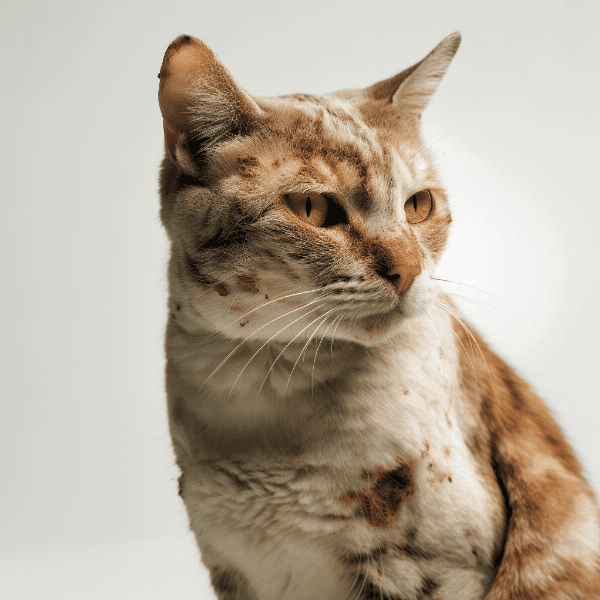
Diagnosing Feline Skin Cancer
If you suspect that your cat may have skin cancer, it is important to schedule an appointment with your veterinarian. Your veterinarian will perform a thorough physical examination and may recommend additional tests to diagnose feline skin cancer.
Physical Examination
During the physical examination, your veterinarian will carefully examine your cat’s skin for any lumps, bumps, sores, or other abnormalities. They may also feel for any enlarged lymph nodes, which can be a sign that cancer has spread to other parts of the body.
Biopsy
If your veterinarian suspects that your cat may have skin cancer, they may recommend a biopsy. A biopsy involves removing a small piece of tissue from the affected area and examining it under a microscope to determine if cancer cells are present. There are different types of biopsies that your veterinarian may recommend, including a fine-needle aspirate, punch biopsy, or excisional biopsy.
Imaging Tests
In some cases, your veterinarian may recommend imaging tests, such as x-rays or ultrasound, to determine if cancer has spread to other parts of the body. These tests can help your veterinarian determine the extent of the cancer and develop an appropriate treatment plan.
Blood Tests
Blood tests may also be recommended to help evaluate your cat’s overall health and determine if cancer has affected any of their organs. Your veterinarian may perform a complete blood count, chemistry panel, or other tests to assess your cat’s organ function.
Conclusion
Diagnosing feline skin cancer can involve several different tests and procedures. If you suspect that your cat may have skin cancer, it is important to schedule an appointment with your veterinarian as soon as possible. Early detection and diagnosis can help improve your cat’s prognosis and quality of life.
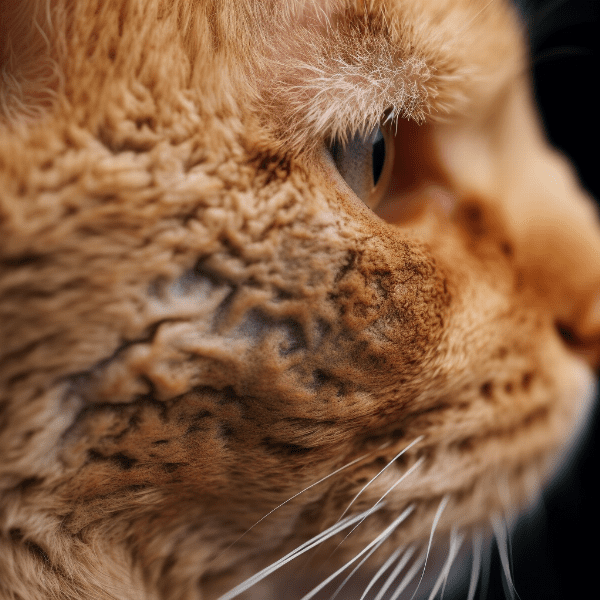
Treatment Options for Feline Skin Cancer
There are several different treatment options available for feline skin cancer. The treatment that is recommended will depend on the type and stage of the cancer, as well as your cat’s overall health and age.
Surgical Procedures
Surgical removal of the cancerous tissue is often the first line of treatment for feline skin cancer. Depending on the location and extent of the cancer, the surgeon may remove only the cancerous tissue or may need to remove a larger area of skin. In some cases, a skin graft may be necessary to help the wound heal properly.

Surgical Procedures for Feline Skin Cancer
Surgical removal of the cancerous tissue is often the first line of treatment for feline skin cancer. The surgical procedures that are recommended will depend on the location and extent of the cancer, as well as your cat’s overall health and age.
Excisional Biopsy
An excisional biopsy involves removing the entire cancerous growth, as well as a surrounding area of healthy tissue. This type of biopsy is often used for small, superficial tumors.
Mohs Surgery
Mohs surgery is a specialized surgical technique that is used for skin cancers that are located in areas where it is important to preserve as much healthy tissue as possible, such as the eyelids or nose. During Mohs surgery, the surgeon removes a layer of tissue and examines it under a microscope to determine if all of the cancerous tissue has been removed. This process is repeated until all of the cancerous tissue has been removed.
Cryosurgery
Cryosurgery involves freezing the cancerous tissue with liquid nitrogen. The frozen tissue is then removed, either by scraping or cutting it off. Cryosurgery is often used for small, superficial tumors.
Electrosurgery
Electrosurgery involves using an electric current to remove the cancerous tissue. This technique can be used to remove small, superficial tumors.
Reconstructive Surgery
Depending on the location and extent of the cancer, your cat may require reconstructive surgery to help the wound heal properly. Reconstructive surgery may involve using skin grafts, flaps of skin from other parts of the body, or other techniques to close the wound and promote healing.
Conclusion
Surgical procedures are an important treatment option for feline skin cancer. The type of surgery that is recommended will depend on several factors, including the location and extent of the cancer, as well as your cat’s overall health and age. If your cat requires surgery for skin cancer, it is important to work closely with your veterinarian to ensure the best possible outcome.
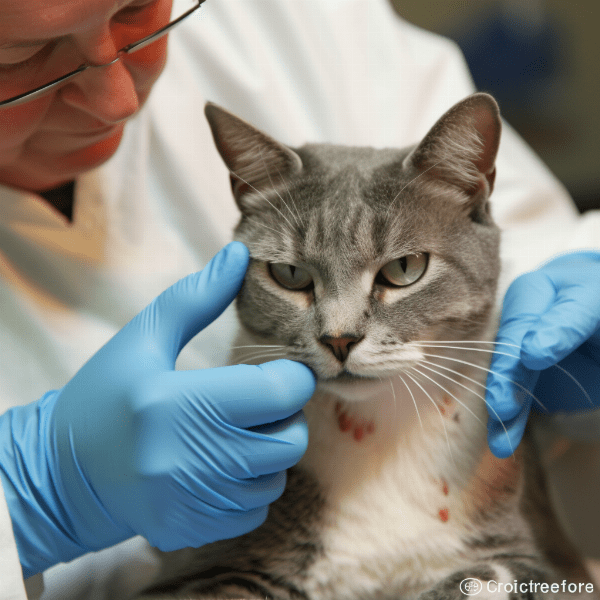
Radiation Therapy for Feline Skin Cancer
Radiation therapy is a treatment option for feline skin cancer that involves using high-energy radiation to kill cancer cells. Radiation therapy may be recommended if the cancer is in a location where surgery is not possible or if the cancer is likely to recur. Radiation therapy can also be used after surgery to help kill any remaining cancer cells.
How Radiation Therapy Works
Radiation therapy works by damaging the DNA inside the cancer cells. This damage makes it difficult for the cells to divide and grow, eventually leading to their death. Radiation therapy can be delivered externally, using a machine that directs radiation at the cancerous tissue, or internally, using a radioactive implant that is placed directly in the tumor.

Chemotherapy for Feline Skin Cancer
Chemotherapy is a treatment option for feline skin cancer that involves using drugs to kill cancer cells. Chemotherapy may be recommended if the cancer has spread to other parts of the body or if the cancer is not responding to other treatments. Chemotherapy can be given orally or through injection.
How Chemotherapy Works
Chemotherapy works by targeting cells that divide and grow rapidly, which includes cancer cells. The drugs used in chemotherapy interfere with the cell division process, causing the cancer cells to die. Chemotherapy drugs can also affect healthy cells that divide and grow rapidly, such as those in the bone marrow and hair follicles, which can cause side effects.
Treatment Schedule
Chemotherapy is typically administered in multiple sessions over a period of several weeks or months. The total number of sessions that are required will depend on the type and stage of the cancer, as well as your cat’s overall health and age.
Side Effects
Chemotherapy can cause side effects, which may include vomiting, diarrhea, loss of appetite, and hair loss. These side effects are usually temporary and will gradually improve after the completion of treatment.
Success Rates
The success rates of chemotherapy for feline skin cancer vary depending on the type and stage of the cancer, as well as other factors. In general, chemotherapy can be an effective treatment option for feline skin cancer, either on its own or in combination with other treatments.
Conclusion
Chemotherapy is a treatment option for feline skin cancer that can be used to kill cancer cells and help prevent the spread of the cancer. If your cat is undergoing chemotherapy, it is important to work closely with your veterinarian to manage any side effects and ensure the best possible outcome. With early detection and prompt treatment, many cats with skin cancer can live happy and healthy lives.
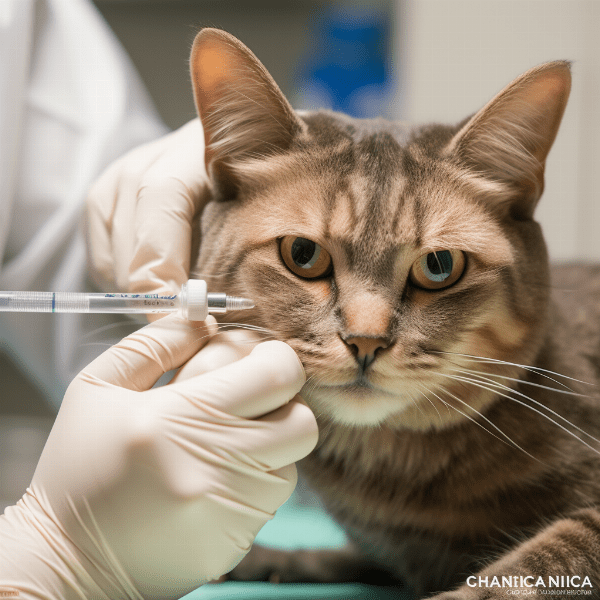
Palliative Care for Feline Skin Cancer
In some cases, feline skin cancer may not be curable. In these cases, palliative care can help manage your cat’s symptoms and improve their quality of life.
Pain Management
Pain management is an important aspect of palliative care for cats with skin cancer. Your veterinarian may prescribe pain medications or recommend other pain management techniques to help keep your cat comfortable.
Wound Care
If your cat has sores or other wounds related to their skin cancer, wound care is an important part of palliative care. This may involve cleaning and dressing the wound, as well as providing pain relief.
Nutritional Support
Cats with skin cancer may experience a loss of appetite or difficulty eating due to discomfort. Nutritional support, such as feeding your cat smaller, more frequent meals, may help ensure that they are getting the nutrients they need.
Emotional Support
Caring for a cat with skin cancer can be emotionally challenging. It is important to seek emotional support for yourself as well as your cat. This may include talking with your veterinarian or a counselor, as well as spending quality time with your cat.
Conclusion
Palliative care can help improve the quality of life for cats with skin cancer that is not curable. If your cat is undergoing palliative care, it is important to work closely with your veterinarian to manage their symptoms and ensure that they are as comfortable as possible. Remember, your cat relies on you to provide them with the care and support they need, and with your help, they can continue to enjoy a good quality of life.
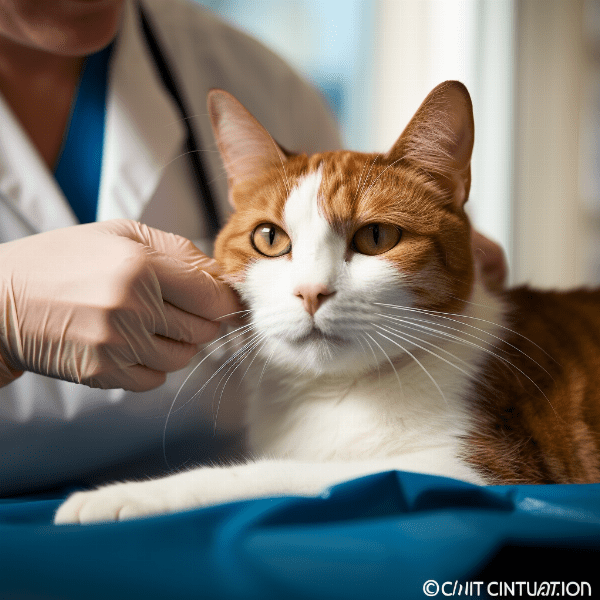
Preventing Feline Skin Cancer
Preventing feline skin cancer is an important part of keeping your cat healthy. While some risk factors, such as age and genetics, cannot be controlled, there are several things you can do to help reduce your cat’s risk of developing skin cancer.
Limit Sun Exposure
Exposure to the sun’s ultraviolet (UV) rays is a major risk factor for feline skin cancer. To reduce your cat’s exposure to UV rays, keep them indoors during peak sunlight hours, provide shaded areas outside, and use pet-safe sunscreen on areas of your cat’s skin that are exposed to the sun.
Check Your Cat’s Skin
Regularly checking your cat’s skin for any lumps, bumps, or sores can help detect skin cancer early, when it is most treatable. If you notice any changes in your cat’s skin, such as new growths or changes in the size or color of existing growths, contact your veterinarian.
Maintain a Healthy Diet
A healthy diet can help support your cat’s immune system and reduce their risk of developing skin cancer. Choose a high-quality cat food that is rich in antioxidants and other essential nutrients.
Regular Veterinary Check-ups
Regular veterinary check-ups are important for detecting and treating feline skin cancer early. During check-ups, your veterinarian can examine your cat’s skin for any signs of skin cancer and recommend appropriate treatments or preventative measures.
Conclusion
Preventing feline skin cancer involves limiting your cat’s sun exposure, regularly checking their skin for any changes, maintaining a healthy diet, and scheduling regular veterinary check-ups. By taking these steps, you can help reduce your cat’s risk of developing skin cancer and ensure that they stay healthy and happy for years to come.
